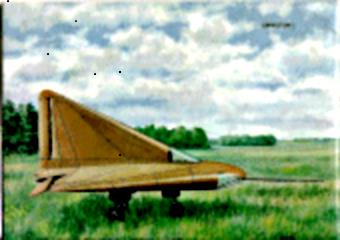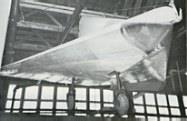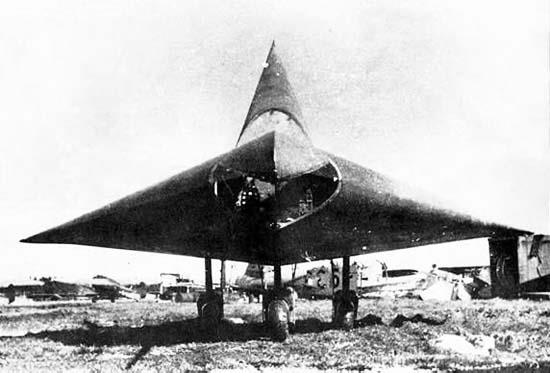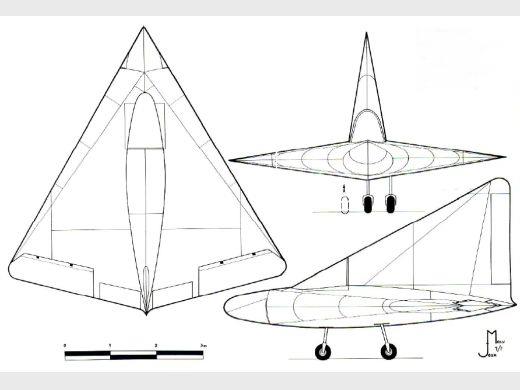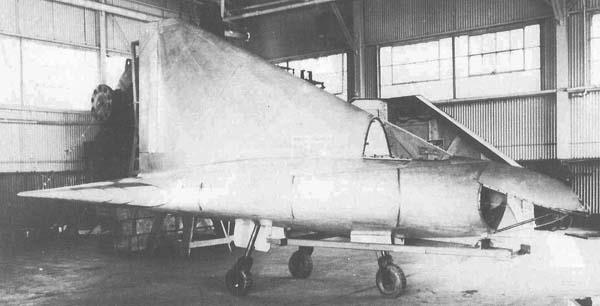After its construction in a factory in the Wiener Wald, near Vienna, had been interrupted, it was captured at the DFS test facility at Prien. After the airframe had been completed under American supervision, it crated for shipment to the US. Its transfer to the US had been ordered by the famous aerodynamicist Theodore von Karman, who was Chief of the USAAF Scientific Advisory Group at the time. The DM 1 was taken to the National Advisory Council for Aeronautics (NACA) facility at Langley Field for full-scale wind tunnel testing. It was crated and sailed from Rotterdam on the SS King Hathaway bound for Boston, where it arrived on l9th January 1946. The authority for the wind tunnel tests was dated 5th February 1946. The tests were completed by January 1948 and were of use in the development of the Convair XF-92 which was the prototype from which the F-102 was developed. The wind tunnel tests were quite extensive and included tests in the aircraft's original configuration, with its large fin removed, and then in both of these conditions with modified wing leading edges designed and installed at Langley. It had originally been intended to mount the DM 1 on top of a Douglas C-47 carrier aircraft which would have taken the aircraft to a height from which it could have been released for piloted free-flight. However, the wind tunnel tests showed that the aircraft was directionally unstable and had higher drag and a significantly lower Lift/Drag ratio than predicted. It was concluded that aircraft of the delta configuration would always have to be landed under power. It was considered that free-flight tests of the glider would have been unsafe and therefore no such trials were carried out. Details of the wind tunnel investigations were given in two NACA reports, NACA RM No. L6K20 of l2th February 1947 and NACA RM No. L7F16 of 5th August 1947, the first reporting on the 'Maximum lift and flow characteristics of the triangular wing planform' and the second on 'Maximum lift and stability characteristics'. In January 1950 the DM 1 was transferred to the Smithsonian Institution. After static display in the museum at Wright-Patterson AFB for a period in the early 1950s, the DM-1 was taken to Silver Hill, where it is still in store.
| Type |
Single seat research aircraft |
| Engine |
|
| Dimensions |
Length 6,32 m, height 3,25 m, span 6,00 m |
| Weights |
Empty 375 kg, flying weight 460 kg |
| Performance |
Max. speed 560 km/h, landing speed 72 km/h, gliding ratio 7 |
